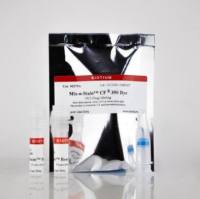Flow Cytometric Detection of Fluorescent Redistributional Dyes for Measurement of Cell Transmembrane Potential
互联网
629
Eukaryotic cells are electronegative when compared to the surrounding environment. This negative charge is called the transmembrane potential (TMP) and is partly caused by concentration gradients of K + , Na 2+ , and Cl − ions across the cell membrane. For purposes of cell osmolarity and pH balance, Na 2+ and Cl − ion concentrations are kept lower inside the cell relative to the external environment, whereas K + ions are maintained at a high intracellular concentration (relative to outside the cell) balancing negative charges on cytoplasmic organic molecules (Fig. 1 ). These ion gradients are maintained by the relative impermeability of the plasma membrane to charged particles and by membrane-bound, energy-dependent ion pumps. The net negative TMP is generated by a combination of K + ion loss through leak channels (down the K + concentration gradient), Na 2+ ion loss through the Na 2+ /K + ATPase, and negatively charged organic molecules trapped in the cytoplasmic compartments of the cell ( 1 , 2 ).
Fig. 1. Forces that regulate and determine membrane potential. Approximate intracellular and extracellular ion concentrations for mammalian cells are represented in boxes. White arrows represent direction and strength of electrochemical gradients for each ion. Negative signs represent charge of the cell membrane.








